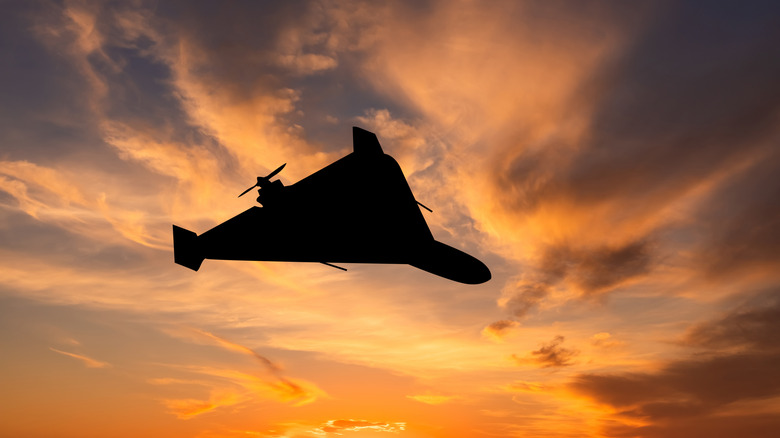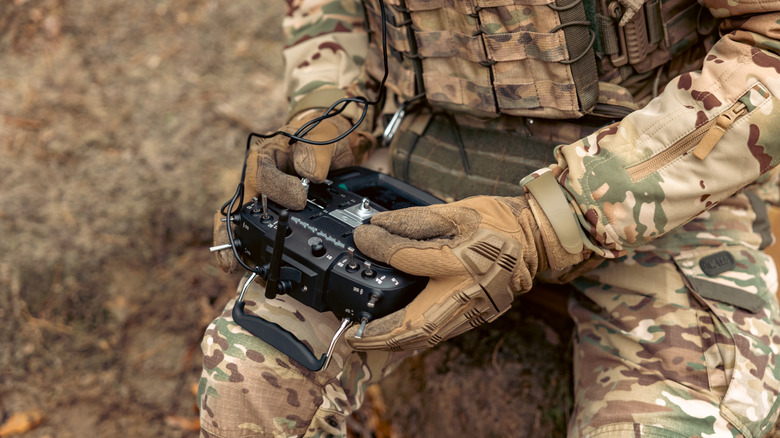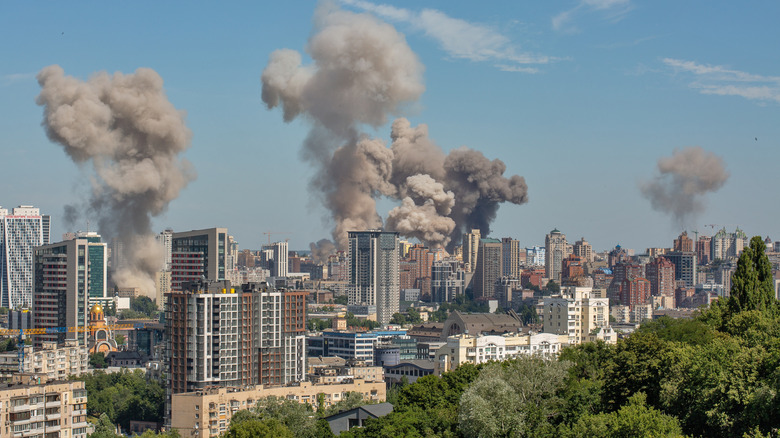Russia's New Jet-Powered Drone Is Immune To Electronic Warfare - Here's How
The war between Russia and Ukraine has become a war of technology. In February 2022, Russia invaded Ukraine. The war has been ongoing for the last three years, with Russia holding a section of Ukraine under its control and continuing aggressive efforts to force the country to surrender. In a war that has killed tens of thousands of civilians and displaced millions more, the changing warfare technology has caught international interest.
From the start, technology, including social media platforms like TikTok, has been an element in this war. Some of the technological advancements that have taken center stage include cyber warfare tactics, the use of Artificial Intelligence (AI), and the deployment of drones. Russia has put a huge emphasis on using drones for attacks. In September 2025, Russia conducted a drone-based assault that utilized over 800 drones at once. It had been using the Geran-2 in its attacks, modeled after an Iranian drone called the Shahed-136. But that has now changed.
The new Russian drone is referred to as the Geran-3. Ukraine started seeing it in the skies in early 2025, and now it is more commonplace in attacks. Ukraine must keep up with the advanced technology of Geran-3, and the rest of the world has realized this new drone's immunity to standard electronic warfare means there is much to adapt to when it comes to international defense.
The technology of this drone
Russian drones have always been advanced, and the Geran-3 is no exception. It can reach speeds of up to 230 mph, utilizing a Chinese Telefly JT80 turbojet engine. With a range of 600 miles, it can cover significant ground. A black stealth paint scheme also makes it adept at fast night-based missions.
The Geran-3 is made up of foreign parts from countries like the United States, Great Britain, Japan, Germany, Switzerland, and China. It features a complex anti-jam navigation system, making it resilient to electronic warfare tactics that would seek to bring it down. This system is composed of a 12-element adaptive antenna array called Kometa-M12. It protects it against jamming and ensures navigational accuracy.
The drone carries a 110-pound warhead, as well as a camera with a data link for reconnaissance and reporting operations. This jet-powered drone boasts capabilities that can blast and disperse shrapnel over hundreds of feet. It brings to mind a quote from D. Keith Shurtleff, who wrote The Effects of Technology on Our Humanity for the U.S. Army War College Quarterly. In it, he stated, " . . . as war becomes safer and easier, as soldiers are removed from the horrors of war and see the enemy not as humans but as blips on a screen, there is a very real danger of losing the deterrent that such horrors provide."
What is being done to counter Russia's new drone
Ukraine is currently manufacturing and releasing interceptor drones. The current models can only reach speeds of around 200 mph, making them slower than the Geran-3. However, Ukraine is continually developing new drone technologies to counter Russia's aggressive airborne attacks. We may see interceptor drones that match or exceed the Geran-3 very soon.
In this war, SpaceX's Starlink, the satellite internet service, has become critical. It lets drone operators control and get images from their drones on both the Ukrainian and Russian sides. Ukrainians rely on Starlink to maintain real-time connections with drone pilots across the front lines. Though sanctions exist to attempt to stop Russia from using Starlink for its drone militia, the Russian army has been able to bypass this by purchasing Starlink equipment through other countries.
The rest of the world now watches this drone-based war, offering aid to those in need and placing sanctions in attempts to dissuade Russia. There is a lot for other countries to learn from if drone-based conflict comes to them in the future. As D. Keith Shurtleff quotes Dave Grossman, author of "On Killing," "Technology also plays a powerful role in overcoming the natural tendency to resist killing . . . Soldiers at close range or engaged in hand-to-hand combat exhibit a much higher resistance to killing, but at long range — snipers, artillery, bombers — the resistance to killing is much lower."


